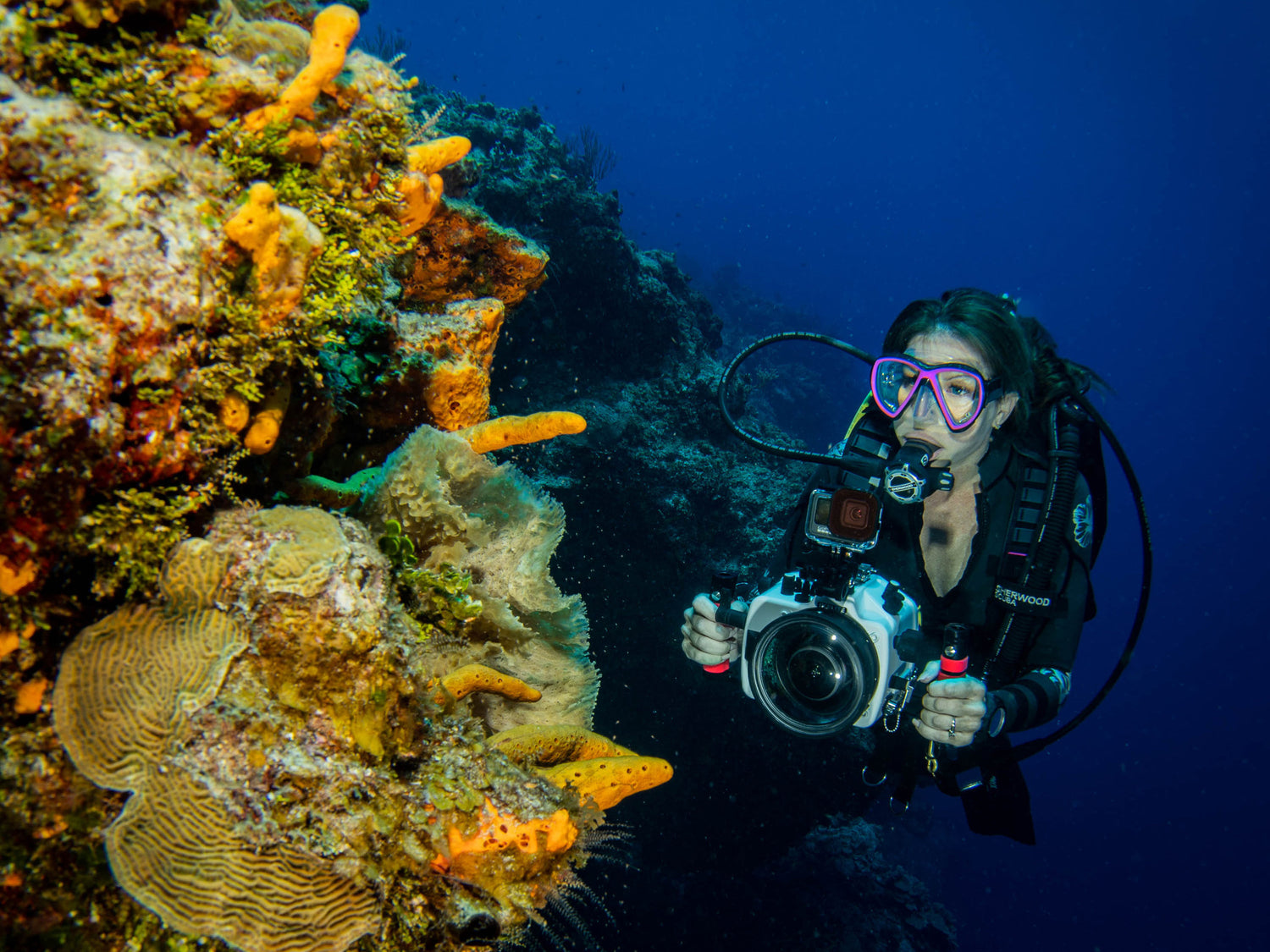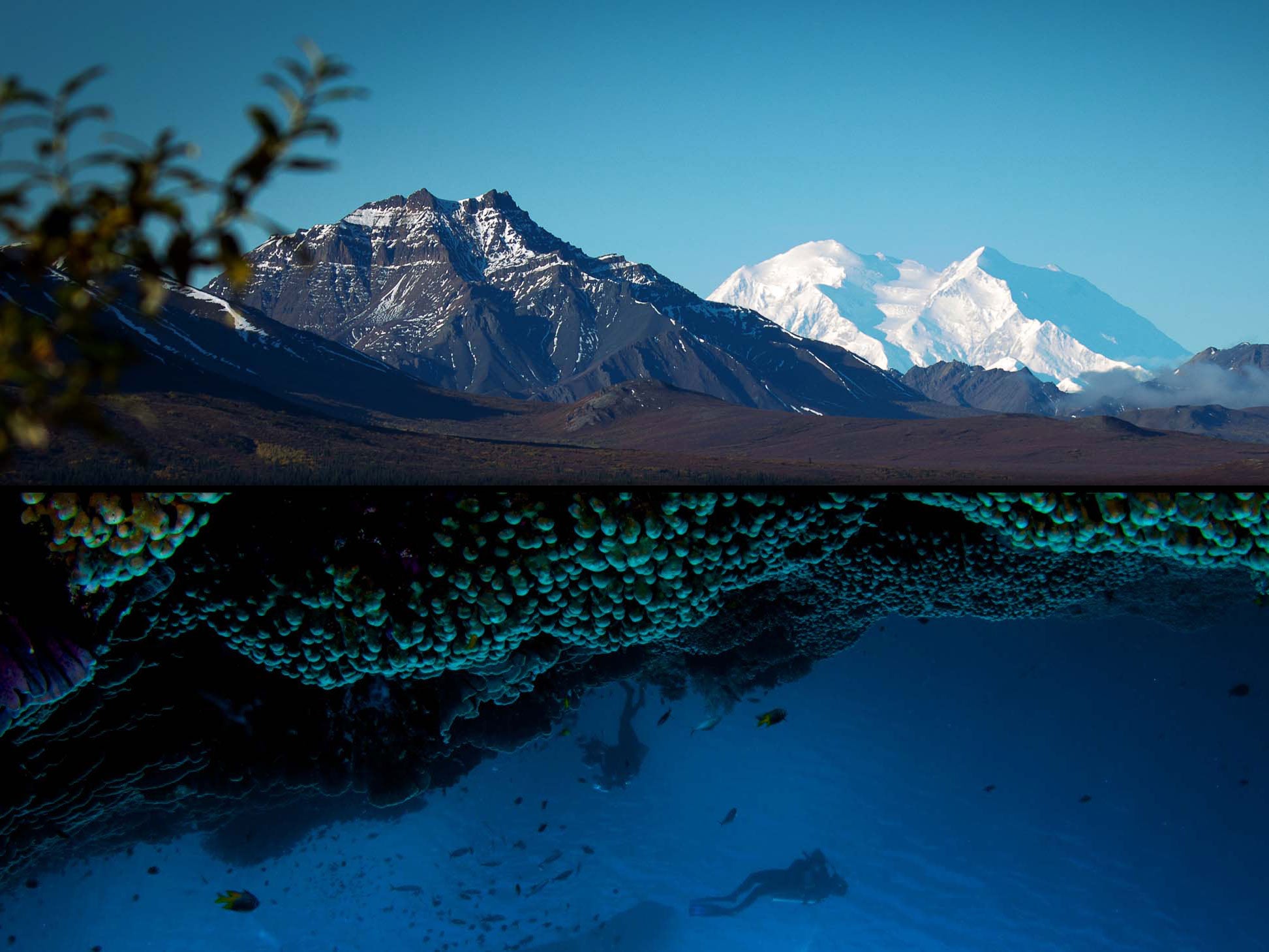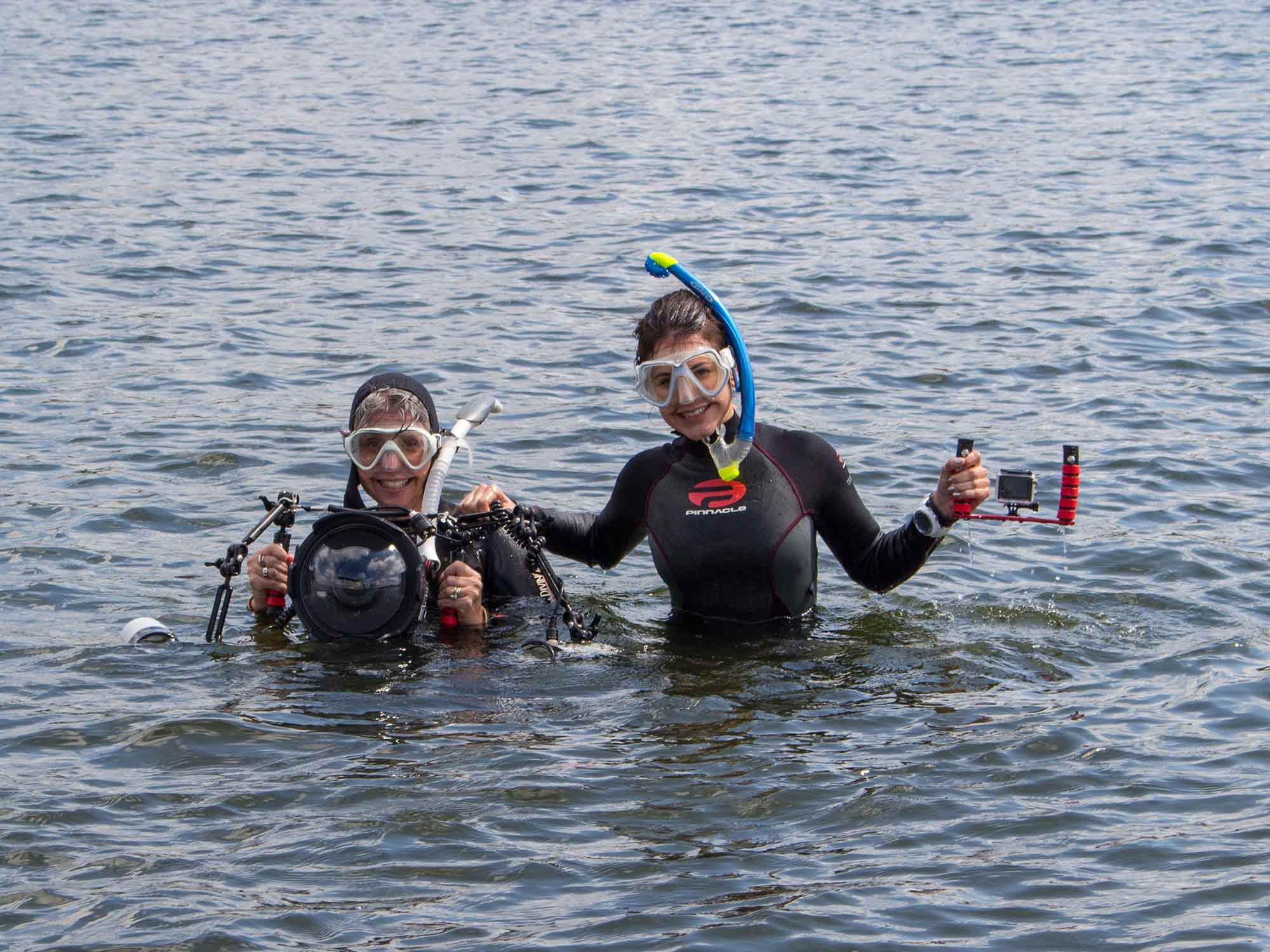By Jean Rydberg
I'm always shooting a new camera underwater. For any camera system there are dozens of settings, lenses, accessories, and so forth that can improve your underwater footage. Regardless of the camera, these are the steadfast rules I follow to come home with footage that can be edited down to something your friends and family may actually want to sit down and watch.
1 | Try shooting at 60p.
You may not realize this, but a lot of great underwater video you see is actually edited and displayed in slow motion. Our eyes recognize fluid movement at 24 frames per second (fps, also called 24p when shooting video). If you record at twice that, or 60p, then you ensure that your video will still look good if you decide to slow it down in post-production.
2 | Set the shutter speed to 2x the frame rate.
If your camera allows you to, shoot video in manual exposure mode and set your shutter speed to about 2x your frame rate – i.e. 1/50 when shooting 24p, or 1/125 when shooting 60p. Vary your aperture for depth of field and then use your ISO to correctly expose the frame.
3 | Do a 360.
When you’re just starting to get the hang of shooting with available light, there’s one sure fire way to get the best angle on the reef. Stay in one place and turn around one full rotation while looking at the camera’s LCD screen. Most angles will look blah while one direction will pop with the rays of the sun. Orient yourself in a way that you are shooting in that direction, or moving over the reef in that direction.
This short clip shows how different an underwater scene can look in front of you vs behind you. I started out with a colorful bed of sea grass with streaming light rays everywhere. Behind me that same landscape looks dark and a little dull.
4 | Make useable clips.
I shoot for about 10-20 seconds per clip and typically only go longer if I have no idea what the subject is about to do. Shorter than that and you won’t have enough time to add transitions (such as dissolving to another clip or fading to/from black). By going longer you’re making your footage more cumbersome to edit and wasting storage space.
5 | Trim your system.
Balancing your rig front to back and side to side goes a long way to smooth, steady video. You don’t want to fight its buoyancy underwater, especially if you’re diving in current or surge. I try to keep my system around 1/2 to 1 pound negative when I’m shooting ambient light and evenly weighted front to back. When adding light, budget to add the same lights and arms to both sides.

The Compact 8" Dome Port is awesome for shooting video underwater because it doesn't have all the extra air inside like a traditional full size 8" dome port. If you are shooting a full size 8" dome, consider adding the Trim Weight System to balance your housing front-to-back. • Photo © 2022 Ken Kiefer
6 | Think about your breathing.
Unless you’re diving with a closed circuit rebreather, your inhalations and exhalations affect your buoyancy, your steadiness, and the marine life. I try to exhale gradually as I’m setting up a shot and then inhale as slowly as possible while filming.
Conclusion
There you have it - the super easy way to get some good video footage underwater. These work whether you're shooting with a GoPro, a compact like the Olympus Tough TG-6 or Sony RX100, or a full frame mirrorless like the Canon R5 or Nikon Z7. Of course, once you have all of that good footage you'll have to make time back at home to edit and share!
 Jean Rydberg, daughter of Ike Brigham, became President & CEO of Ikelite in 2006. Prior to that, she wisely pursued a degree in Astronomy & Astrophysics to prepare herself for the challenges of running a technology-driven manufacturing business with global distribution. Jean fully embraces the need to travel outside of her hometown of Indianapolis to experience good diving. She believes that any camera is capable of amazing results in the right hands, and anyone can become a great photographer given the right advice. When she's not working she's spending time with her husband, cats, and two daughters (though not necessarily in that order).
Jean Rydberg, daughter of Ike Brigham, became President & CEO of Ikelite in 2006. Prior to that, she wisely pursued a degree in Astronomy & Astrophysics to prepare herself for the challenges of running a technology-driven manufacturing business with global distribution. Jean fully embraces the need to travel outside of her hometown of Indianapolis to experience good diving. She believes that any camera is capable of amazing results in the right hands, and anyone can become a great photographer given the right advice. When she's not working she's spending time with her husband, cats, and two daughters (though not necessarily in that order).
Additional Reading
When to Use a Compact 8" Dome Port Underwater
Achieve a Perfectly Balanced Mirrorless or DSLR Housing [VIDEO]
Diving Catalina Island with the Canon R5 and R6 [VIDEO]
My Journey from Underwater Stills to Video
Under Pressure | The Art of Underwater Filming with Matt Jacobs [VIDEO]
The Making of The Rapture of the Deep with the Panasonic GH5 [VIDEO]













